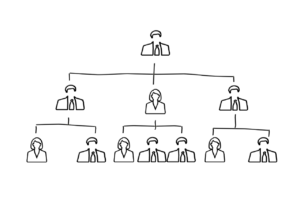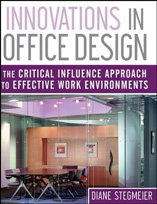Critical Influence™: Organizational Structure
What is organizational structure?
 You have certainly seen an organizational chart more than once in your life, whether in the corporate world, educational institutions, in government, or even for the coaching staff or front office of your favorite sports team. This chart typically shows the interrelatedness of each member of an entity and comprehensively illustrates the structure of an organization.
You have certainly seen an organizational chart more than once in your life, whether in the corporate world, educational institutions, in government, or even for the coaching staff or front office of your favorite sports team. This chart typically shows the interrelatedness of each member of an entity and comprehensively illustrates the structure of an organization.
While you can easily identify one when you see it, how would you create a perfect org chart? Let’s start first with the definition of organizational structure.
An organization’s structure is the hierarchical arrangement of individuals within a business entity. It defines the roles and responsibilities of each individual, who supervises whom, and how decision-making or information flows within the structure. This flow describes how each member works in achieving collective goals.
No two organizations are exactly identical. This is because structure is established depending on the purpose of existence, objectives, and the needs of an organization.
In the business world, organizational structures have changed over time in response to shifting social influences and organizational theory. Let’s explore the different theories that gave way to the various types of organizational structures that have been introduced to the business scene through the years.

As part of the 15 Critical Influences™, this page on Organizational Structure is integrated with actual content from the book Innovations in Office Design: The Critical Influence Approach to Effective Work Environments™ by SCG Founder Diane Stegmeier.
The history of organizational structure
Many organizational theories serve as guidance and direction for businesses, especially for start-ups and companies that are seeking to improve their processes. Here are some of the theories that influenced the organizational structures in the business world:
- 1911 – Frederick Taylor, the “father of scientific management,” offered sound advice for businesses operating in the Industrial Age. Focused on the principles of task specialization and production efficiency, he recommended a “unity of command,” whereby each employee reported to only one individual within the overall chain of authority.
- 1920s to early 1930s – The findings of Harvard University’s Elton Mayo from the Hawthorne studies conducted at Western Electric in Chicago, launched new thinking about the physical work environment, human motivation, and worker productivity. These research results are said to have launched the human relations movement in organizational theory.
- 1940s – Reinforced by the introduction of Abraham Maslow’s hierarchy of needs, the importance of applying principles of sociology and psychology in the workplace increased among business leaders.
- 1950s to 1960s – The thought leadership of Peter Drucker, Rensis Likert, Laurence Peter, Kurt Lewin, Douglas McGregor, Warren Bennis, and others became required reading for those charged with advancing their organizations to future success. Vanderbilt University’s Richard L. Daft suggested that “organizational form and design are the ultimate expression of strategy and implementation.”
- 1979 – The classic structural framework proposed by Henry Mintzberg, the Cleghorn Professor of Management Studies at McGill University in Montreal and a professor of organization at INSEAD in Fontainebleau, France, began serving companies that were aggressively pursuing innovation as a strategic intent. The specific organizational design envisioned by Mintzberg, an adhocracy, is a matrix structure developed for survival in a complex, dynamic environment. High-performance teamwork is enabled through numerous horizontal linkages and empowerment. In an adhocracy, professionalism is emphasized, cultural values are strong, and decision making is encouraged at all levels of the organization.
- Information Age – As the Industrial Age gave way to the Information Age, the heightened complexity of work necessitated a more holistic approach to organizational analysis. The typical business structure needed to incorporate growing uncertainty and the interdependency of subsets of the whole system. The principles of systems thinking, contingency planning, adaptation, and change readiness became the guidelines for business leaders in developing organizational structures.
- Late 1990s – The more recent work of Henry Mintzberg in conjunction with Ludo Van der Heyden, the Solvay Chair for Technical Innovation at INSEAD, echoes the need for organizational preparedness in order to tap competitive opportunities and to understand how innovative ideas flow throughout the structure via a system of hubs and webs. The visual depiction of the structure, in the form of an organigraph, helps business leaders prepare structurally for innovative outputs.
It can be observed that as new theories surfaced and were introduced to the corporate world, executives were learning that innovation favors a combination of prepared minds and strategically crafted organizational structures.
These same leaders, however, often fail to recognize the impact of the physical work environment on the innovative outputs critically needed for survival in the competitive global economy. In the words of American physicist Joseph Henry, “The seeds of great discoveries are constantly floating around us, but they only take root in minds well prepared to receive them.”
When attempting to drive innovation by introducing change in the workplace, it is beneficial to keep the above points in mind. But how can organizational structure and the physical workplace be strategically aligned to ensure the success of a workplace strategy that aims to foster innovation? Read on.
The impact of organizational structure on workplace strategy
The alignment of organizational structure and the physical work environment holds so much potential in steering innovative behavior in the workplace. And yet, many leaders continue to overlook this vital aspect when managing change initiatives.
As an example, many companies still perceive physical work space as a currency to reward status. If someone holds a high position in the organization, that individual is entitled to a private office to show that they are valued.
When this mentality is still present in the implementation of workplace changes, consequences may arise. A new workplace strategy that maintains outdated standards of using space to reward status may invest in many under-utilized private offices. If the new way of working is centered on collaboration and encouraging innovation, these private spaces should not be used as much.
However, when executives and leaders have a deeper understanding of how the physical workplace can be optimized to support organizational structures, better results will come out of the process. The new workplace strategy is appropriately aligned with the ever-changing organizational hierarchy by incorporating flexibility to reconfigure departmental space through fewer hard walls.
But you may ask, “Why does the physical workplace need flexibility? Do organizational structures really change?”
Architects and interior designers also face related questions as they create workplace environments for their clients today: Against which model of organizational structure will a solution be judged for its effectiveness? What will change? What will remain the same?
If there’s one thing we can count on, it’s that the only constant is change. The need for an enterprise, its structure, workforce, and physical and virtual workplace environments to be flexible and adaptable, to respond to whatever changes are on the business horizon, cannot be overstated.
But you might well ask: Does an organizational structure exist that is agile enough for today’s unpredictable business landscape as well as for the unpredictable future? To shed some light on this question, let’s explore concepts from the thought leadership of Robert Johansen and Rob Swigart.
Building flexibility into your organizational structure and workplace
If you ask any number of individuals in the business world to visualize a corporate hierarchy, the typical description will be of a pyramid. A pyramid maintains the precise, hard-edged structural shape, incapable of flexing. It does not morph according to changes in the external environment.
Robert Johansen and Rob Swigart challenged our thinking about organizational flexibility and adaptability in their book Upsizing the Individual in the Downsized Organization: Managing in the Wake of Reengineering, Globalization, and Overwhelming Technological Change. In it, they introduced the concept of the “Fishnet Organization.”
Imagine a net laid out on a dock. If you grab a node and lift, the rest of the net lattices nicely under it. A temporary hierarchy appears as long as you hold up the node, with layers consistent with how high you lift the node and the width of the mesh. The hierarchy disappears when you lay the net down. Pick up another node, another soft hierarchy appears.”
—ROBERT JOHANSEN AND ROB SWIGART, 1994
 If you think about the concept of the Fishnet Organization as it applies to how things actually get done in today’s workplace, you’ll see this flexible, yet incredibly strong structure makes perfect sense. In the words of Robert Johansen, “Economies of scale (where bigger is almost always better) are giving way to economies of organization, where you are what you organize, inside—and especially outside—your organizational boundaries.”
If you think about the concept of the Fishnet Organization as it applies to how things actually get done in today’s workplace, you’ll see this flexible, yet incredibly strong structure makes perfect sense. In the words of Robert Johansen, “Economies of scale (where bigger is almost always better) are giving way to economies of organization, where you are what you organize, inside—and especially outside—your organizational boundaries.”
The creation of numerous teams is driven by changing demands being made from within and outside of the enterprise. An individual is often a member of multiple groups. Collaborative, task-driven units form, achieve what they are charged to do, then disband. With each new temporary hierarchy that forms around a project or initiative comes new connections within that node, as well as relationships between the ever-changing collection of nodes.
In the Fishnet Organization, the structure of each temporary team is as large as it needs to be to incorporate the diverse talents required to accomplish the given initiative. That’s not to say that permanent hierarchies do not exist in this structure. On the contrary, the formal authority in the organization acts to support the various temporary hierarchies that form and dissolve over time.
Another idea from Robert Johansen also offers guidance for business leaders of today. His book titled Get There Early: Sensing the Future to Compete in the Present, includes his thought leadership on the role of the office and other physical places where “real work” gets done. He said, “Gradually, organizations are coming to think of the office as a flexible array of activities—not necessarily a fixed place.” Johansen advises us to “learn to be comfortable being uncomfortable. Offices as we know them are part of our current comforts, but the ground is shifting beneath the office.”
In the context of the physical work environment, these concepts can be integrated into the planning and implementation of a new workplace strategy. While there is much to think about and consider when attempting to drive change in the workplace, ideas from these thought leaders can light the path and help leaders see the influence of organizational structure in workplace transformations.
This is especially true when an enterprise ventures into the idea of workplace flexibility. To give employees control over when, where, and how they work, a culture of trust needs to prevail in all roles within the organizational structure. For example, when implementing work from home procedures, those in managerial roles need to trust people to be productive no matter where they are.
In a new office environment, trust is shown when employees are given the autonomy and authority to choose from different workplace settings that will best support productivity in relation to the task at hand. For this to happen, managers and leaders must shift from a line-of-sight mentality to a supervision that holds employees accountable for results.
The most important takeaway from this is that attitudes displayed by all members of the organizational structure need to be aligned with the objectives of a new workplace strategy in order to see a successful change take place.
Consulting expertise to help you align your organizational structure with your new workplace strategy
Organizational structures have a significant impact on the physical work environment. As a change leader, it is important for you to look into your existing or even future organizational structures that might need to be established and oversee its alignment with your new workplace strategy.
Whether you are planning to initiate a workplace change or in the midst of implementing it, Stegmeier Consulting Group’s expertise can lead you through the process and provide you with knowledge on how your organizational structure can thrive in a new work environment. Start discussing your plans with us by filling out the form below.



